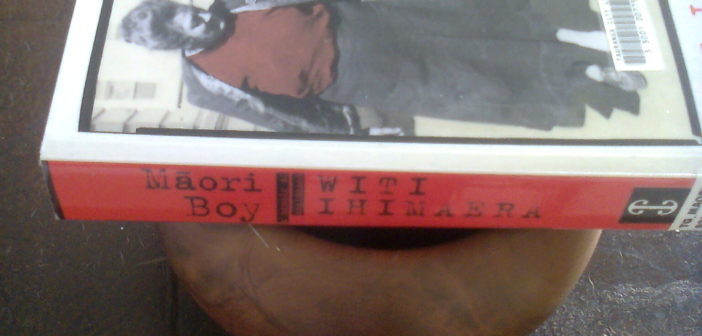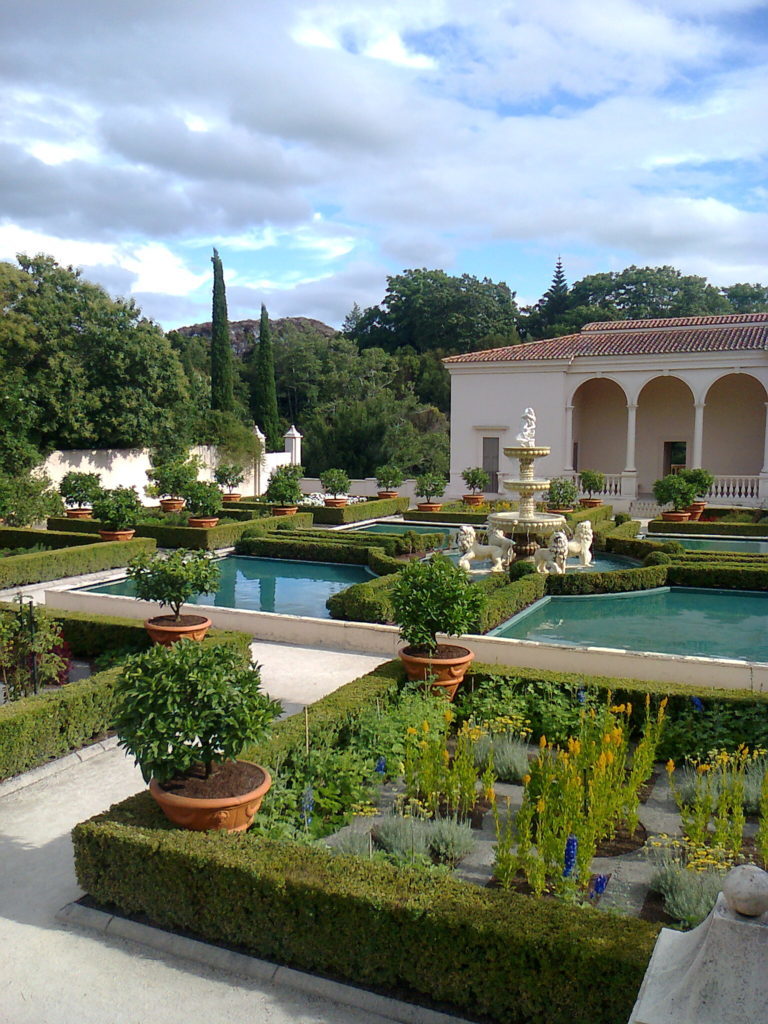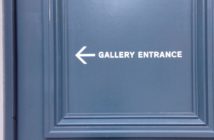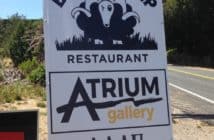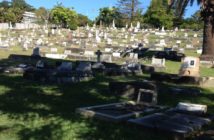Each year on February 6th we celebrate “Waitangi Day” – named to commemorate the primary signing of the Treaty of Waitangi one of the founding documents of colonial and contemporary New Zealand. Like ANZAC Day we celebrate something the reasons for and results of which were dubious. And like ANZAC Day, as real social conditions for many New Zealanders have patently deteriorated, the attention and importance given to event celebration has increased.
Waitangi Day and its associated marae have had a chequered history of spectacle and protest. 2017 is no exception. Te Tii Marae, traditional venue of welcome for Crown and governmental representatives provided the entertainment this year.
Apprentice-like, the marae trustees who are later described by iconic New Zealand politician Winston Peters MP as “young” want “the media” to pay to record this fundamental public event. On this occasion “the media” either for reasons of parsimony or an understanding of the nature and importance of the occasion, collectively refuse to pay. They endeavour to film the current Governor General being escorted onto Te Tii – a blue tarpaulin is placed over the hole in the hedge they have resorted to. Peters himself is refused entry to the marae when he shows up because he has media in attendance. He’s then apparently hassled on the public road outside the marae.
I don’t know the current “backstory” to the behaviours by the Te Tii Marae trustees: if it’s on the basis of tino rangatiratanga; nationalism; a life spent watching reality TV and reading about Richie’s wedding in celebrity pastel colour in The Australian Women’s Weekly (yes I’ve read it) or as Peter’s suggests “arrogance” it doesn’t matter on the day it just looks “totalatarian”. And this morning I can’t help but wonder if the development of localised activities is now more important to the day than the welcoming of dignitaries to a now distant Northland marae.
It was another hard-hot day yesterday for Waitangi Day in Tauranga. I was incapable of moving from my bed in time to attend any of the formal, traditional commemorations around the town. You can blame the Librarians at the Greerton Library who placed Witi Ihimaera’s “Maori Boy” at eye-height on the shelves leading from the computer room – I finished my third extended session of Ihimaera-immersion at 2am on the 6th. It took me three long periods of reading – each one so compelling I structured my working day so I was able to read. 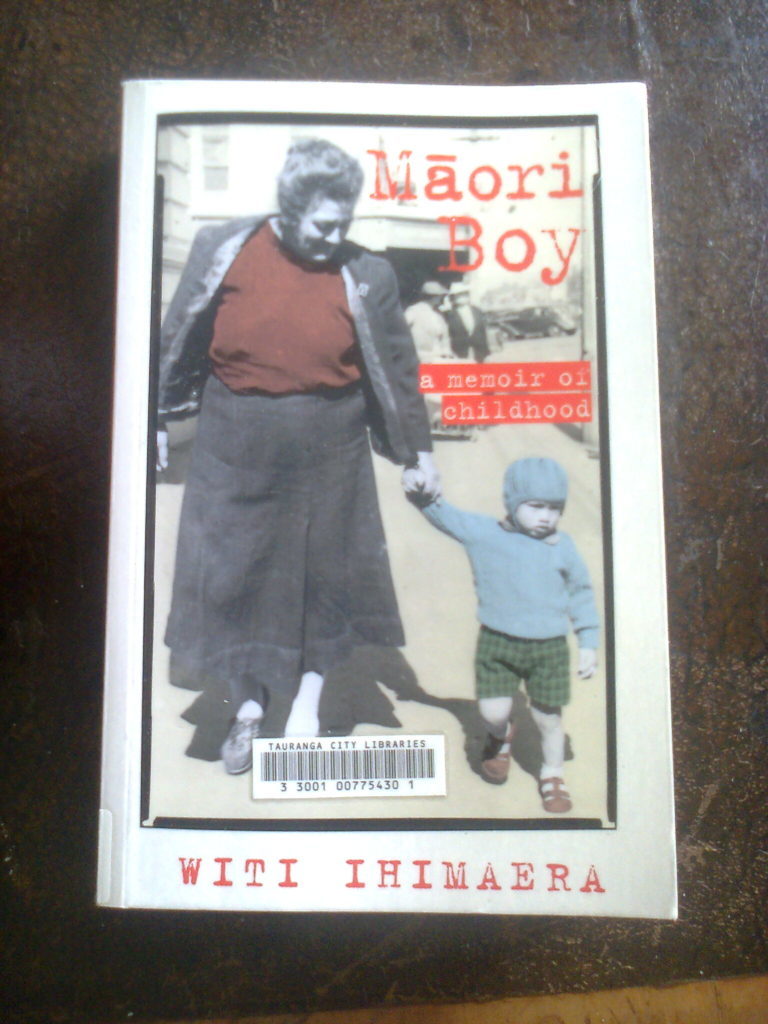
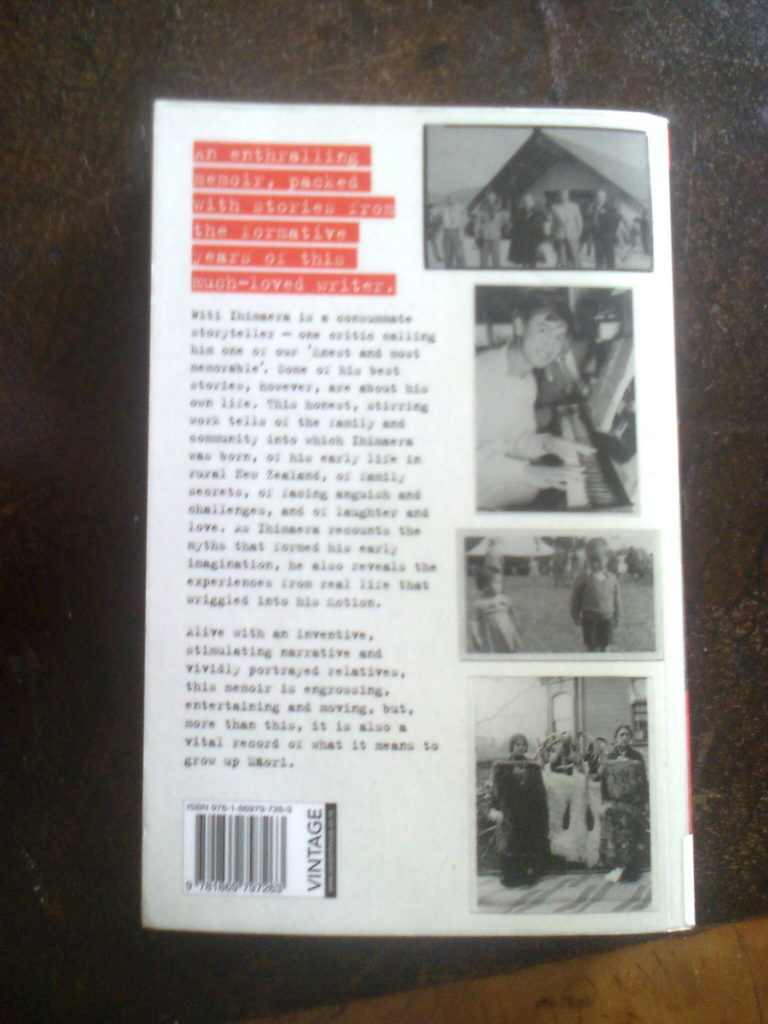 Ihimaera’s gift to me was an absorbing narrative not just of his life and that of his family, but of Maori history and the impact of the Treaty of Waitangi. While there were many moments when I laughed, there were many moments when tears prickled in my tired late-night eyes. Ihimaera doesn’t avoid unpleasant and unpalatable issues within Maori society but he writes about them in a way that allows them to be confronted. So because of Ihimaera I decide to revisit the Tauranga reality of the Treaty of Waitangi – the Battles of Gate Pa – Pukehinahina and Te Ranga – the colonial need to appropriate land.
Ihimaera’s gift to me was an absorbing narrative not just of his life and that of his family, but of Maori history and the impact of the Treaty of Waitangi. While there were many moments when I laughed, there were many moments when tears prickled in my tired late-night eyes. Ihimaera doesn’t avoid unpleasant and unpalatable issues within Maori society but he writes about them in a way that allows them to be confronted. So because of Ihimaera I decide to revisit the Tauranga reality of the Treaty of Waitangi – the Battles of Gate Pa – Pukehinahina and Te Ranga – the colonial need to appropriate land.
Tauranga is a land of hills, ridges and valleys frilled with coastal swamps. You cannot see it so easily in urban Tauranga today. Houses, roads, shopping centres obscure the height of the tongue of land that is today’s Avenues, Tauranga South and Pyes Pa. At the end of one of the roads off to the west of Cameron Road, by the Probation Service compound you can stand on the edge of grass and weed-covered slopes and look down into history and across the valley to “Cambridge Road” and ”Bethlehem” it’s a more real impression of the past than roads running behind the Tauranga Hospital and 17th Avenue. To the east the land falls into the pit of Fraser Cove. Takitimu Drive cuts the valley off from the sea – it’s now described as a salt-marsh walk and a Reserve.
The battle site at Te Ranga on the corner of Joyce and Pyes Pa Roads, is the same – a narrow ridge. Once rural and horticultural land urbanisation has long been knocking on its door. Aquinas College and the St Thomas Estate are its neighbours Houses and orchards surround it.
Te Ranga was the site of the defeat of local Maori. The place to which they came following their drubbing of the colonial army at Pukehinahina. Attacked before their fortifications here were completed it’s hard not to think of Te Ranga as the site of a massacre.
Today the sky is beautifully blue. Soft clouds of white chiffon and tissue sooth the sky. There is a huge manu – a cloud bird over the Northland-brown Welcome Bay hills. A long cloud tuna has journeyed from Rotorua. I’d seen them as I left Whakamarama and unbelievably they’ve stayed in place. There are no signs. An ordinary metal farm gate with a rough driveway is the entry to the site. Two pou stand in opposing corners of what is essentially a rough paddock. A persistent skylark karangas me onto the land.


Detail of the intricate carving on the pou
I walk across the stubble towards the very simple concrete monument at the far end near the neighbouring house. As I’m walking I see the gouges made by tractor tyres, red clover and small scraps of blue in the grass – it’s tiny pieces of baling twine – the paddock’s not long been cut for hay – and it’s been done using old machinery to create the small rectangular blocks. More than anything I’ll see today it represents the fundamental reason for the deaths at Te Ranga – the need to “acquire” farm land for incoming settlers.
My clothing is sticking to me by the time I’ve walked up the memorial. There is a breeze – harbinger of tomorrow’s bad weather but it’s still hot. The soft sound of traffic going through to Rotorua accompanies the bouquets of wild carrot flowers. Over the road there’s an avocado orchard – new red-green shoots.
I stand in front of the block of concrete and bronze recording in conciliatory and moderate language the significance of the site. The wording bears no relation to the reality of the event as I recall the dramatic scenes re-enacted by the children and young people of local iwi at the 2014 commemoration. The Army of 2,000 got its own back for being humiliated by 230 warriors at Pukehinahina. Today we would call it a war crime.
As I drive towards Gate Pa-Pukehinahina a single white dove flies low over the road in front of my car.
I detour through the Greerton Village – I’ve been drinking water all morning and need to call in at the public toilets at the Greerton carpark opposite the Library. I don’t know who looks after them but these toilets are always clean and tidy and the lurking fear of death by germs I have about public toilets is irrational here. The road to relief goes past the Greerton Village School and they are hosting a “Waitangi Day Family Day”. It’s not on my list but ….
Despite the newly built classrooms on the site, the school has maintained a large open green space – it’s important both for the school, the village and the community. It’s an oasis – mature trees and grass. The Family Day has been going on since 10.30am and the pony rides have just packed up – the float glides past me as I walk in the school gate. What looks like a bouncy castle has been deflated and is waiting sad and flat to be packed for another day. There are awnings and marquees both for shade and stallholders. Shade is at a premium and most of the crowd is standing or seated to avoid the sun. 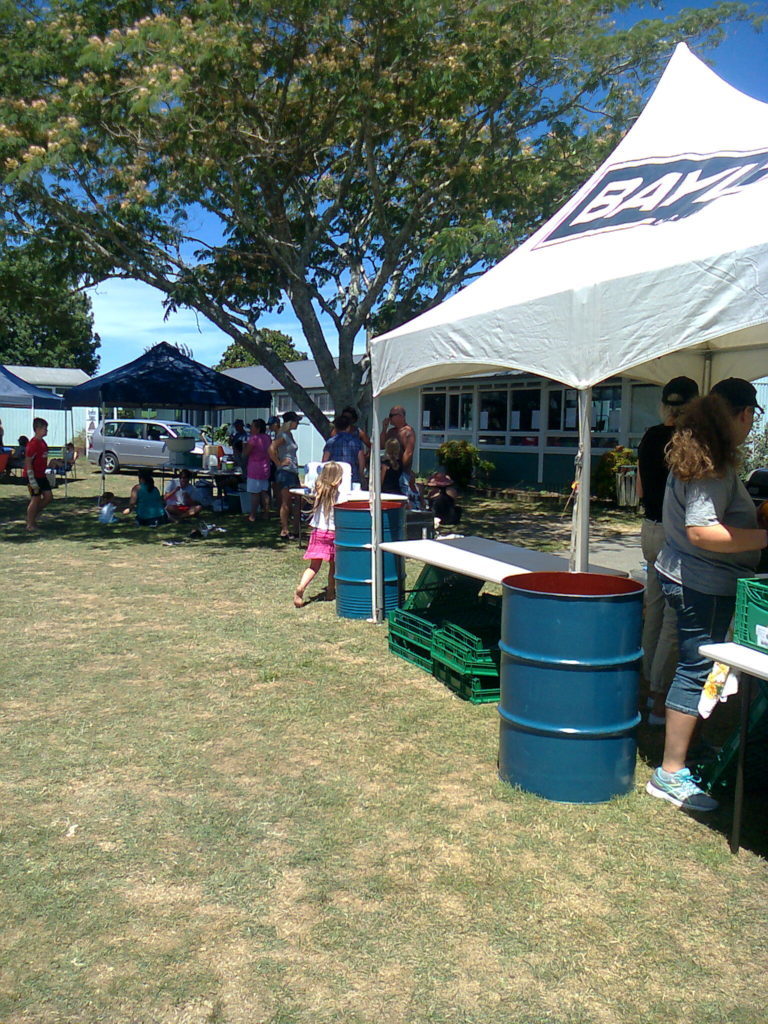
I tour the field. There’s music and food. My saliva glands start to quiver in front of the traditional sausage stall but I manage to totter past. There’s a plywood structure that houses some sort of soccer kicking ball game with a huge tennis ball – the kids explain it and confirm what I knew – it’s not for me. There’s contemporary Polynesian food, Spanish sweet treats and then there’s ice cream. I put my concerns about auto-immune systems and skin to one side and get “Manuka honey and thyme”. (Actually I also put my concerns about varroa mite chemical treatment strips aside too – I haven’t bought honey for ages). I can’t really tell you what it tastes like – it’s so cold it numbs my taste buds but standing in the shade of a huge copper beech I’m so happy I’m here watching what is essentially a country school day.
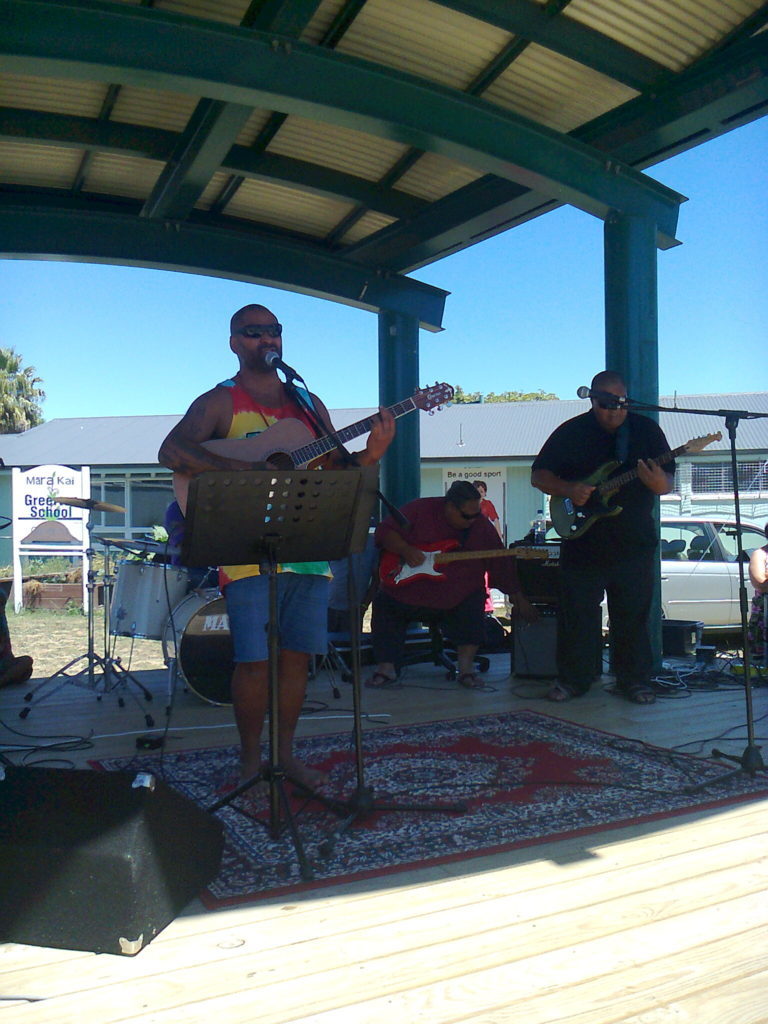

The “boys” in the ice cream truck are as delightful and interesting as their product. They willing give me an extra paper napkin when I confess I’m an ice cream dribbler. They talk about their van, their product and you can find them at the Little Big Markets and other events and functions. They describe the activities here earlier in the day – three legged races, sack races….. A beautiful wife and children show up – they’re hot and have to go home. I talk with Chris from the Polynesian food stall – they can be found at the monthly Merivale School Market – tomorrow I’ll ring the school and find out about that. And drat – I’ve run out of space on my cellphone camera – so I have to go home. Maybe I could do Pukehinahina tomorrow?
But I slowly walk through the grounds of Pukehinahina – Gate Pa. Pukehinahina – on the hill of the Hinahina was built to face the enemy. There’s a man with a handsome Golden Retriever sitting under one of the now big, old shade trees. Despite the looming orangeness of the hardware and gardening centre on the boundary, there’s a sense of peace and of calm.
I walk along the path and read the plaques of information. One of them says quite clearly that the events were about the need of land for settlement. It refers to the wars of the Waikato. I look again at the rendition of the old pen drawings and text description of the pa construction and the trenches and fighting pits. I read again something that still astounds me: 230 warriors opposed 2,000 colonial troops and cannons. The bodies of “unnamed Maori” are buried in the wooded area to the East – that is also recorded on one of the plaques on the monument up by the Church. 
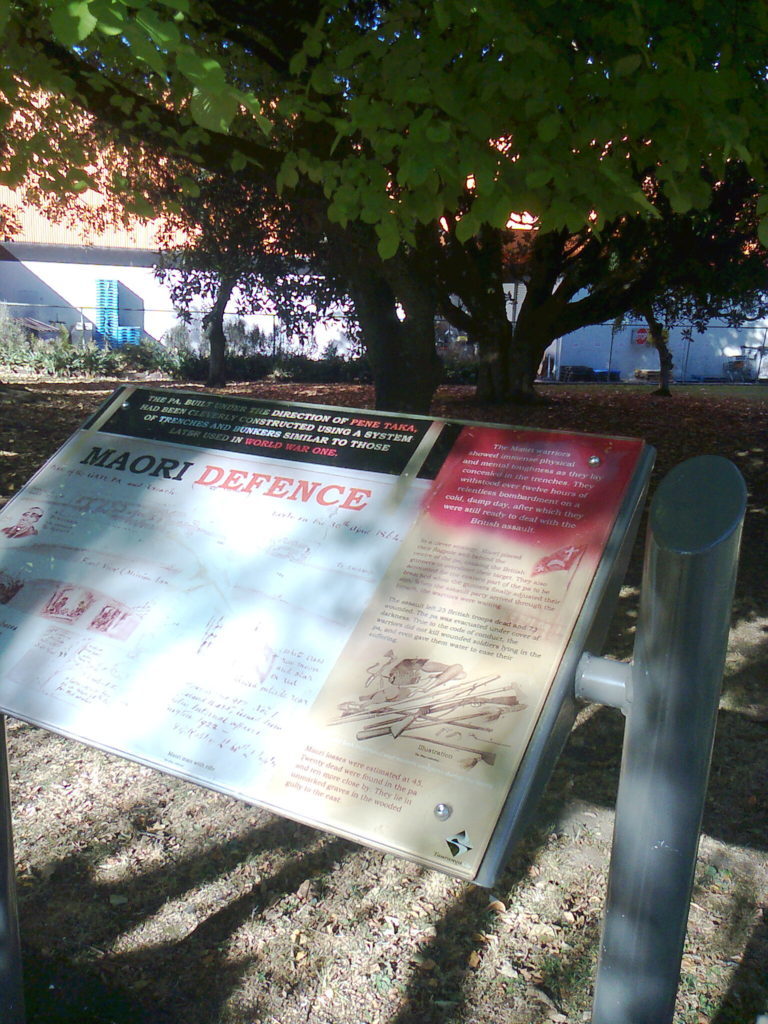 Up by the monument I look with sadness at the remainder of the two totara removed to allow the 2014 commemoration platform to be built. At the time the stumps were carved and, with the permission of a carver, I picked up a piece of bark from one of the trees. Today I collect a handful of acorns from the huge oak tree leaning out from the historic Church grounds and fragments of fallen kauri leaves.
Up by the monument I look with sadness at the remainder of the two totara removed to allow the 2014 commemoration platform to be built. At the time the stumps were carved and, with the permission of a carver, I picked up a piece of bark from one of the trees. Today I collect a handful of acorns from the huge oak tree leaning out from the historic Church grounds and fragments of fallen kauri leaves.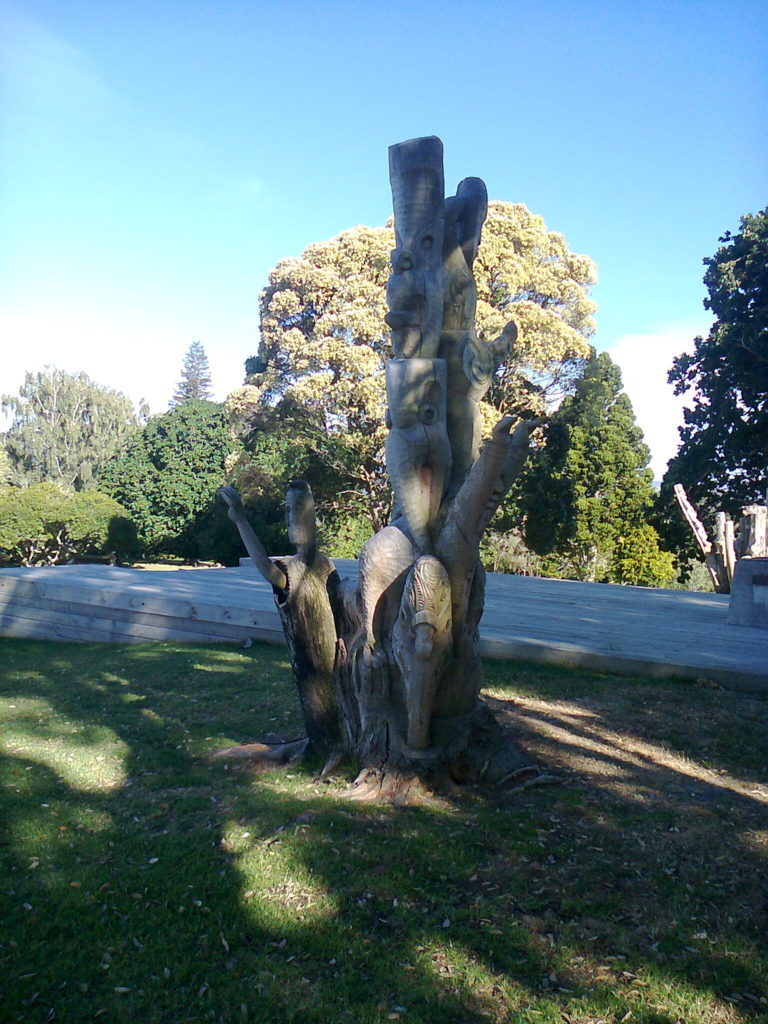
 Driving away from Pukehinahina I decide I’ll go back to Whakamarama, clear my cellphone and come back as my images are being taken to honour both the place and the day.
Driving away from Pukehinahina I decide I’ll go back to Whakamarama, clear my cellphone and come back as my images are being taken to honour both the place and the day.
I call in at Bethlehem Countdown and buy cherries, plums, peaches and this season’s small hard glowing apples. At home I have two cups of tea, a delicious chicken sandwich, some of the fruit and download the photos. I also soak my tired feet in the remainder of the wonderfully smelling aromatherapy product given to me by Sharyn Jacob at the Medieval Faire – bliss. The cross, hot and bothered, hungry old cat shows up as I’m walking out the door – I feed her outside despite the food predatory neighbouring cat who always manages to show up at her mealtimes. As I drive back through Bethlehem a second white dove flies over the road in front of my car.
I re-enter what is a heritage site. 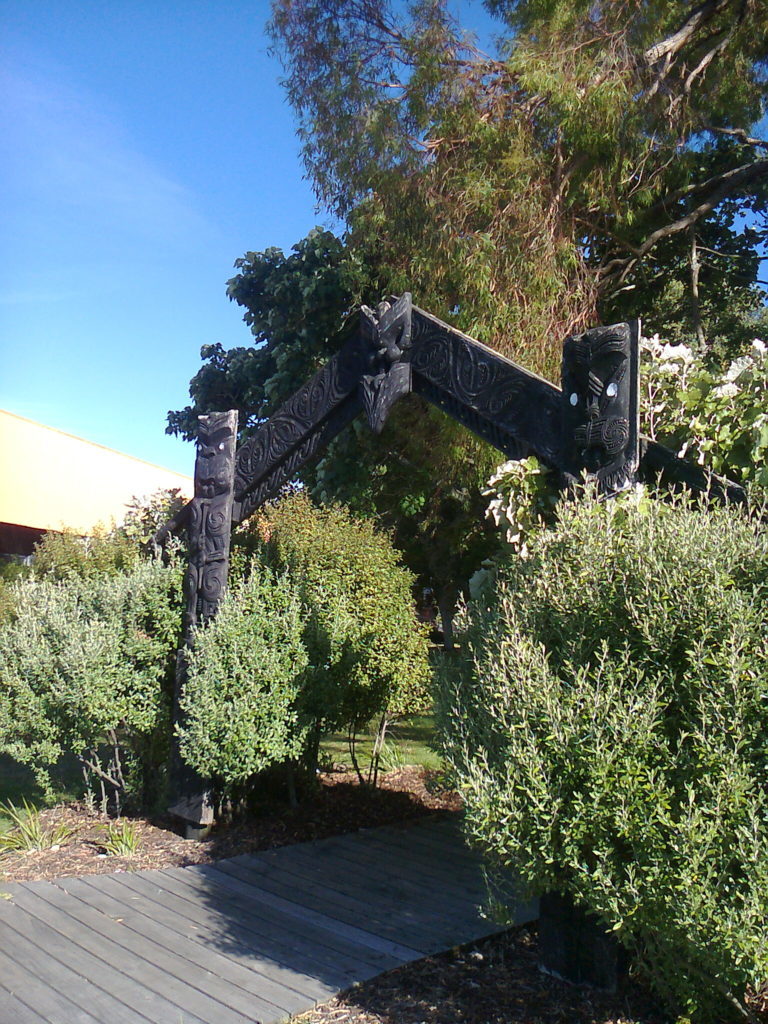
I walk the Pukehinahina path again. This time I walk over to the wooded area at the East – I stand for sometime but I don’t feel anger and bitterness – it feels still and peaceful. I collect small cones from another large tree: interestingly most of the trees in this area are “exotic” another irony particularly as this was the site of a Maori strategic “success”.




The cloak that was on one of the pou in 2014 may have disintegrated but this hasn’t stopped them attracting on-going visitors and photographers. I have always thought it is a pity that the shopping centre site next door was not used to develop a museum to present the history of the region. Even now when I see the transformation of a former hardware store into what is the Whakatane Museum and Exhibition Centre I know it could be done.
Waitangi Day was yesterday – when I open the house to the world this morning the sky is grey, I’m looking down on drifts of fine rain. Several years ago I asked the author of “The Eye Eaters” if in view of what happened to many Maori as a result of colonisation and the Treaty of Waitangi – could the Eye Eaters may have been right – he paused, he thought and said “he didn’t think so” – I’m not sure.
 Rosemary Balu. Rosemary Balu is the founding and current editor of ARTbop. Rosemary has arts and law degrees from the University of Auckland. She has been a working lawyer and has participated in a wide variety of community activities where information gathering, submission writing, community advocacy and education have been involved. Interested in all forms of the arts since childhood Rosemary is focused on further developing and expanding multi-media ARTbop as the magazine for all the creative arts in the Bay of Plenty, New Zealand.
Rosemary Balu. Rosemary Balu is the founding and current editor of ARTbop. Rosemary has arts and law degrees from the University of Auckland. She has been a working lawyer and has participated in a wide variety of community activities where information gathering, submission writing, community advocacy and education have been involved. Interested in all forms of the arts since childhood Rosemary is focused on further developing and expanding multi-media ARTbop as the magazine for all the creative arts in the Bay of Plenty, New Zealand.


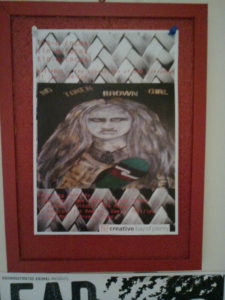 Creative Bay of Plenty is hosting the exhibition “Tin-o-cocoa, tin-o-cocoa, tin-o-cocoa! Waitangi – the subversion of the everyday” from 31 January to 20 February 2017. The exhibition features works by Linda Munn, Que Bidois, Jason Porter, Parewhati Taikato, Mia Morgan, Te Rangipikitia, Damita Phillips, Judy Mohi and Areena Chase.
Creative Bay of Plenty is hosting the exhibition “Tin-o-cocoa, tin-o-cocoa, tin-o-cocoa! Waitangi – the subversion of the everyday” from 31 January to 20 February 2017. The exhibition features works by Linda Munn, Que Bidois, Jason Porter, Parewhati Taikato, Mia Morgan, Te Rangipikitia, Damita Phillips, Judy Mohi and Areena Chase.
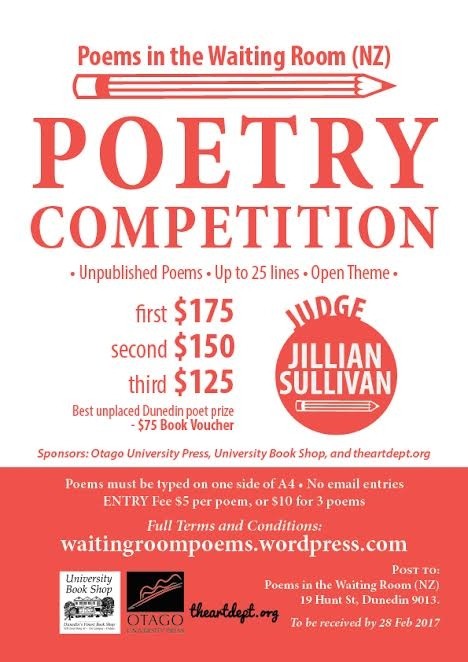
.

 Creative Bay of Plenty is hosting the exhibition “Tin-o-cocoa, tin-o-cocoa, tin-o-cocoa! Waitangi – the subversion of the everyday” from 31 January to 20 February 2017. The exhibition features works by Linda Munn, Que Bidois, Jason Porter, Parewhati Taikato, Mia Morgan, Te Rangipikitia, Damita Phillips, Judy Mohi and Areena Chase.
Creative Bay of Plenty is hosting the exhibition “Tin-o-cocoa, tin-o-cocoa, tin-o-cocoa! Waitangi – the subversion of the everyday” from 31 January to 20 February 2017. The exhibition features works by Linda Munn, Que Bidois, Jason Porter, Parewhati Taikato, Mia Morgan, Te Rangipikitia, Damita Phillips, Judy Mohi and Areena Chase.
Exhibition | Molly Morpeth Canaday Award: Painting and Drawing
January 28 to March 12, 2017
Whakatane Museum and Arts, Whakatane
The 2017 Molly Morpeth Canaday Award for Painting and Drawing will be exhibited across all three galleries at Te Kōputu a te whanga a Toi — The Whakatāne Library and Exhibition Centre — and open to the public from Saturday, 28 January until Sunday, 12 March 2017.
Presented by Arts Whakatāne in association with Whakatāne Museum and Arts, this nationally-recognised art award will recognise 13 category winners. The 2017 judge, Felicity Milburn, announced the winners on Friday, 27 January, including the artists to receive the $2500 Craigs Investment Partners Youth prize and the $10,000 Molly Morpeth Canaday Fund award.
Location
Whakatane Museum and Arts
Date/Time
Date(s) – 28/01/2017 – 12/03/2017
The Judge:

Heather Hourigan, Molly Morpeth Canaday Co-Ordinator with 2017 Judge Felicity Milburn
Felicity Milburn is a Curator at Christchurch Art Gallery, Te Puna o Waiwhetu. She works with artists on a wide range of projects, from temporary installations through to large-scale survey exhibitions. Most recently, Milburn curated exhibitions of historical and contemporary art from the collection and beyond for the Gallery’s reopening. She writes regularly about art for local and international publications and is the art editor for the literary magazine, Takahē. This year, Milburn has worked with Billy Apple and Lisa Walker on solo individual projects, and prepared an exhibition on the paintings of Doris Lusk.
Editor’s Note: There is a large free parking area within easy walking distance of this complex which is part of a waterfront shopping precinct – including a New World if you feel the need to stock up on the basics. Whakatane has a number of cafes within its main streets area which you access through the Centre arcade. There is an outstandingly popular sushi cafe opposite with a great array of sushi and as a bonus “free” green tea. There are signposted public toilets and toilets within the Exhibition Centre. Whakatane is a magical “day out”.
You can also find the flavour of the Eastern Bay of Plenty in Arts Revealed
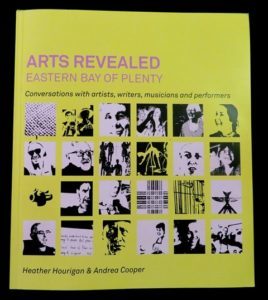 Arts Revealed: Eastern Bay of Plenty
Arts Revealed: Eastern Bay of Plenty
Andrea Cooper and Heather Hourigan
Read the review in Words by Lee Switzer
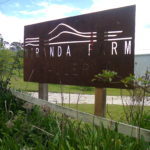 Hello from Miranda Farm Gallery, The Summer show is now up and open for viewing. There are some sculptures out doors in the orchard, and many beautiful paintings, prints, ceramics and sculptures in the gallery.Artists this year include Michael Smither, Fatu Feu’u, Neil Miller,Christine Hellyar, Warren Viscoe, Clovis Viscoe, James Wright, Uli Christofferson, Samantha Lisette, Suzy Dunser. We will be open on all the public holidays through the Summer, and the farm shop/cafe also. We look forward to seeing you here, and have a safe and happy Christmas from us all. Annie Wilson Miranda Farm Gallery 1107 Miranda Rd 09 238 2608 www.mirandafarm.co.nz Open 8-4pm every day
Hello from Miranda Farm Gallery, The Summer show is now up and open for viewing. There are some sculptures out doors in the orchard, and many beautiful paintings, prints, ceramics and sculptures in the gallery.Artists this year include Michael Smither, Fatu Feu’u, Neil Miller,Christine Hellyar, Warren Viscoe, Clovis Viscoe, James Wright, Uli Christofferson, Samantha Lisette, Suzy Dunser. We will be open on all the public holidays through the Summer, and the farm shop/cafe also. We look forward to seeing you here, and have a safe and happy Christmas from us all. Annie Wilson Miranda Farm Gallery 1107 Miranda Rd 09 238 2608 www.mirandafarm.co.nz Open 8-4pm every day
HAMILTON GARDENS: HAS THE HAMILTON GARDEN & ARTS FESTIVAL ON 17-26 FEBRUARY 2017
Travelling through Hamilton and the Waikato? Make sure you take time to stop and walk through the Hamilton Gardens. Forty years of effort on a disused quarry and swamp site has created and international standard botanical garden. Lots of parking, clean toilets and an onsite cafe. Hamilton also has a Museum and art centre on Victoria Street.

Hey Banksy is that you?
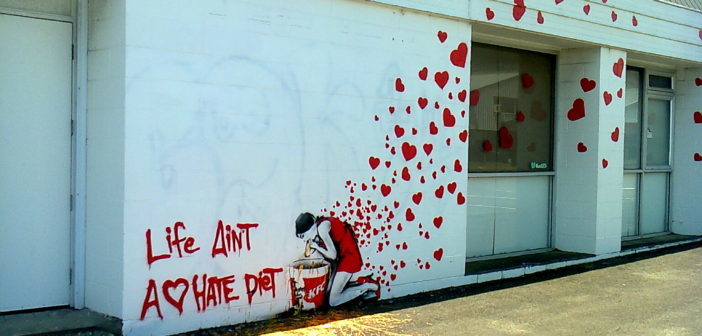
Here he comes…
Paradox the Street Art Festival coming to Tauranga March to June 2017 – W: taurangastreetart.co.nz
THE INCUBATOR, AT THE HISTORIC VILLAGE TAURANGA HAS ITS CURRENT CLASS LIST OUT
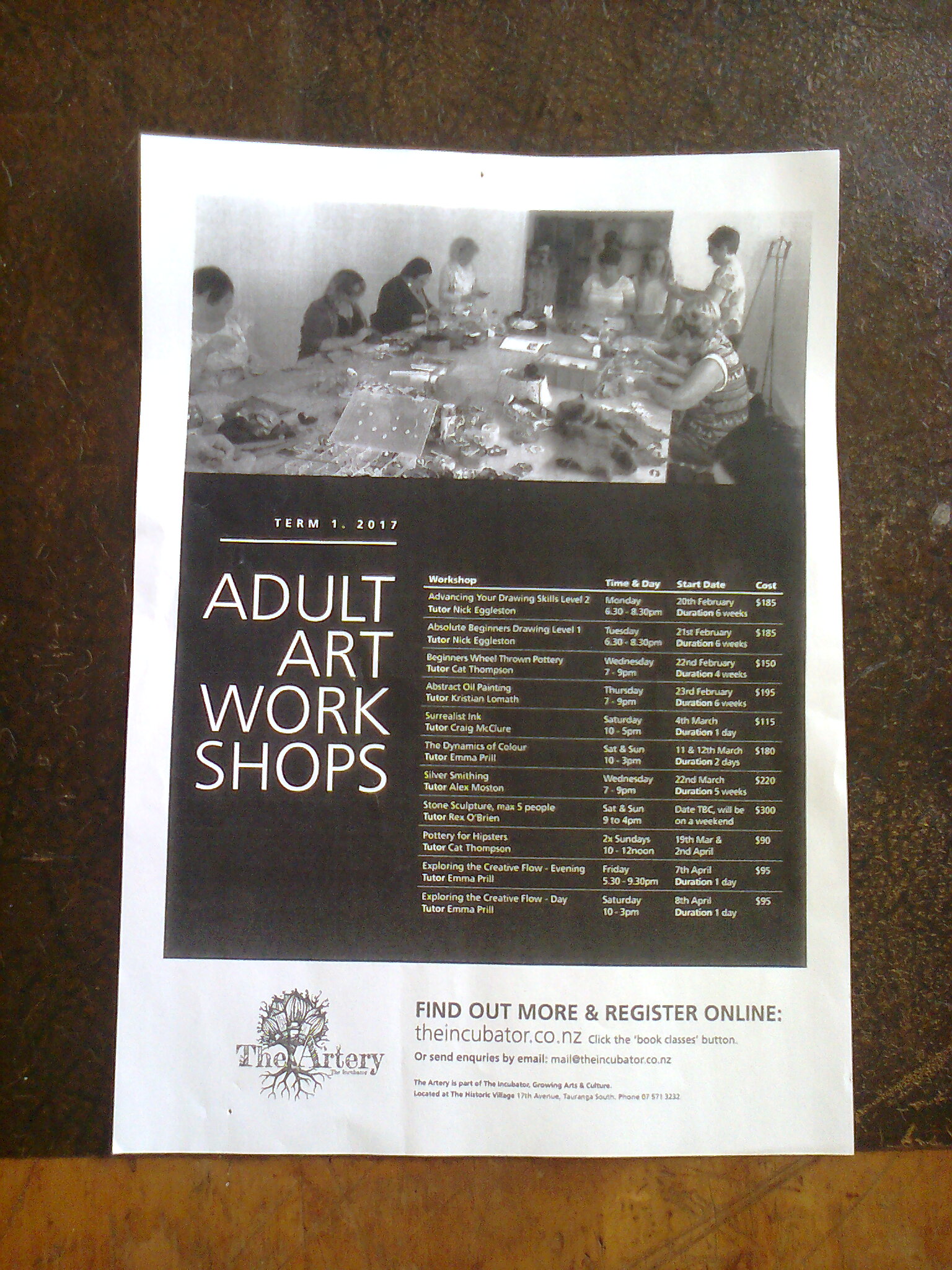
TAURANGA LIBRARIES COLOURING CLUBS
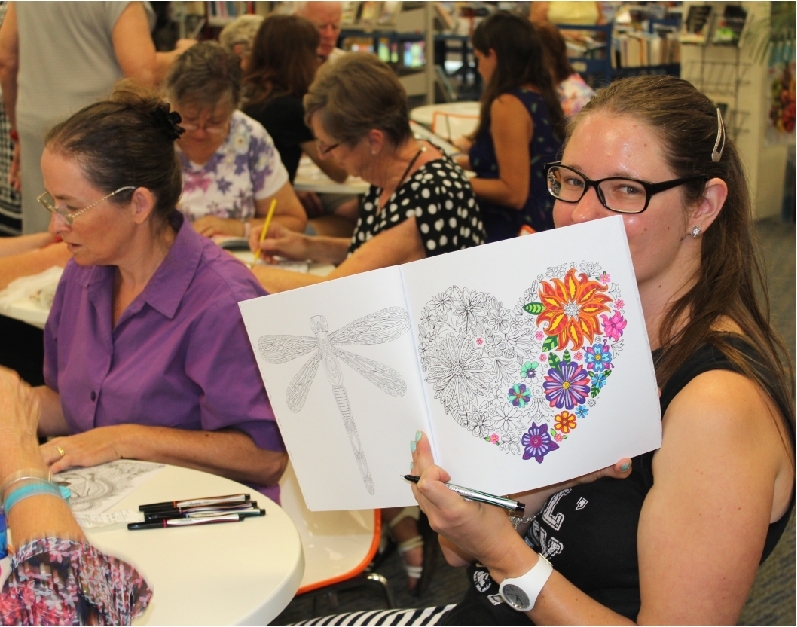
Remember the fun of colouring in as a child? Tauranga City Libraries’ has two Adult Colouring Clubs!
tauranga Library: Held on the last Wednesday of each month from 10:30-11:30am. Register your interest by phoning 577-7177 or by emailing Diane.taggart@tauranga.govt.nz
Papamoa Library: Held on the second Thursday of each month from 10:30-11:30am. Register your interest by phoning 577-7177 or by emailing Kirsten.Allan@tauranga.govt.nz
BYO colouring book and equipment or give it a go using our basic materials supplied.
Adult colouring helps reduce stress, anxiety and we have a lot of creative fun!
| Friends of the Tauranga City Libraries IncPresident: Terry HawkerPatron: Bill Holland
MEETING PROGRAMME
|
Tauranga Library
There is no meeting in February Contact: Betty 542 4322
________________________________________________________________________
Papamoa Library Book Group Wednesday 15 February starting at 10:00am
Topic – Biographies / Autobiographies Contact: Gail 574 3376
________________________________________________________________________
Mount Maunganui Library Book Group Tuesday 28 February starting at 10:00am
Topic – Summer Reading Contact: Gail 574 3376
________________________________________________________________________
Greerton Library – Chat Group Thursday 23 February starting at 10:00am
Topic: Cr Max Mason talks about his inspirational hike of the Appalachian Trail
Contact: Pam 571 2566
_______________________________________________________________________
Visitors and new members always welcome!
secretary@fol-tauranga.org.nz
www.fol-tauranga.org.nz

ZOETICA – life – passion – bravery 30 August to 02 September 2017 Tarnished Frocks & Divas in association with Carrus W: tarnishedfrocksanddivas.co.nz F: Tarnished Frocks and Divas
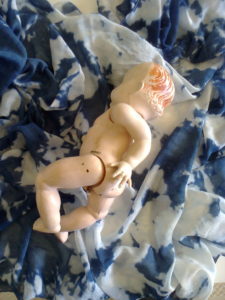 Do not leave me hanging by a thread is a You Tube spoken word project to encourage support for the work of Medecins Sans Frontieres – Doctors Without Borders.
Do not leave me hanging by a thread is a You Tube spoken word project to encourage support for the work of Medecins Sans Frontieres – Doctors Without Borders.
“Medecins Sans frontieres – Doctors Without Borders is an international non-governmental humanitarian medical organisaiton. It delivers emergency aid to people affected by armed conflict, epidemics, natural disasters and exclusion from health care. It was founded in Paris in 1971 by a group of doctors and journalists who believed that all people have the right to medical care regarldess of gender race religion or political affiliation. There are regionally based organisations. Australia has an organisation www.msf.org.au “
ARTbop the Bay of Plenty’s creative arts magazine
–read it online, anywhere, anytime!


